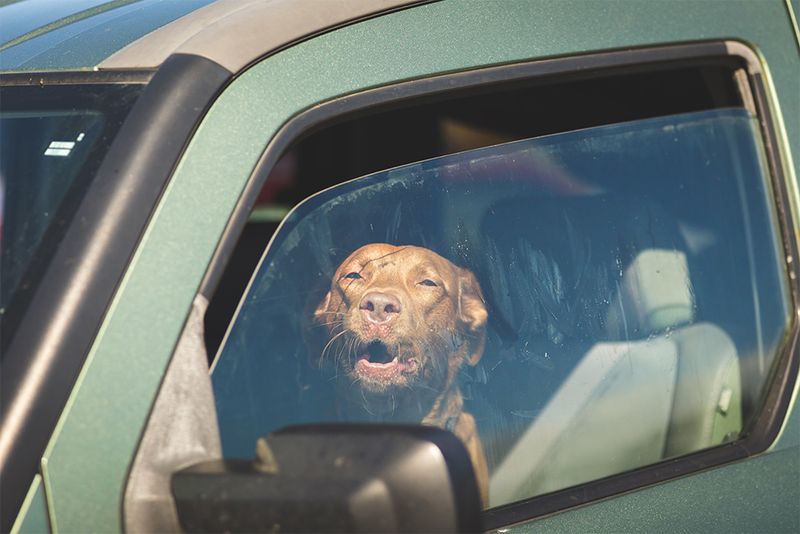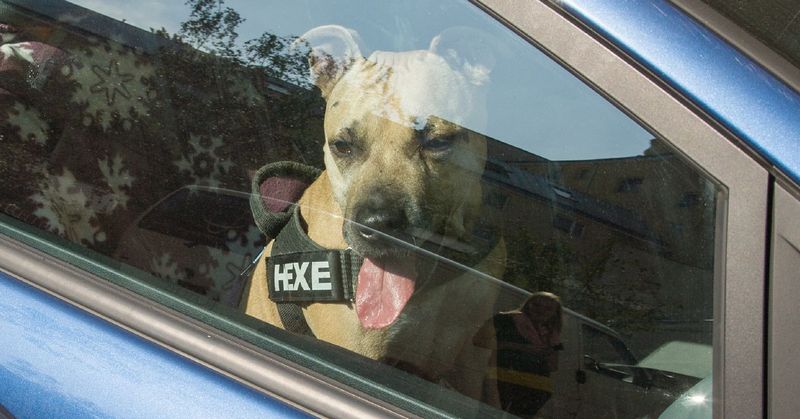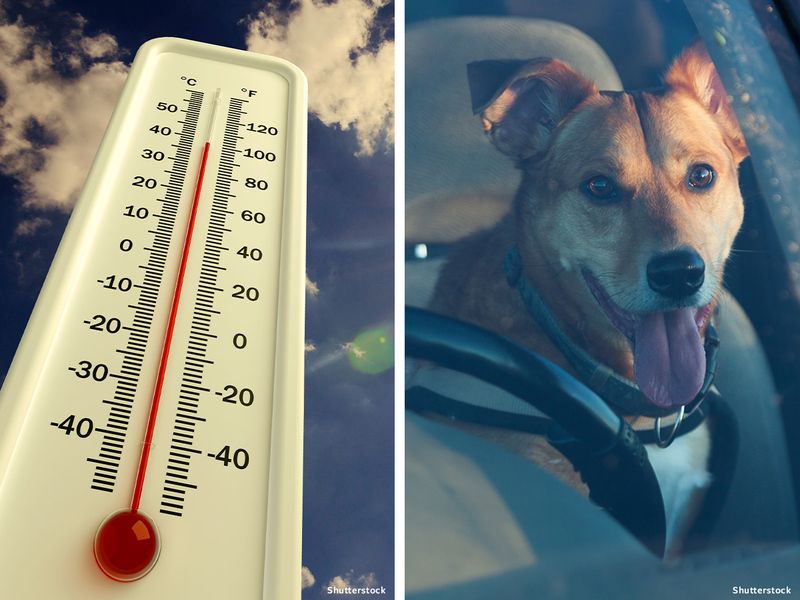Ten minutes can kill. That’s all it takes for a car to become a death trap for a dog—even with the windows cracked. What feels like a quick stop for you can turn into a nightmare for them. Inside a parked car, temperatures can skyrocket faster than you think. On a warm day, 75°F outside can mean over 100°F inside the vehicle in minutes. For dogs, who don’t sweat like humans do, this heat builds up fast—and it doesn’t let go. Panting turns into panic. Organs start to fail. And in some heartbreaking cases, they never make it out. Every summer, stories like these surface. People swear they were “just running in for a second.” But seconds turn deadly. This is what happens to a dog trapped in a hot car—and why it’s never worth the risk.
Rapid Temperature Rise

Just imagine a sunny day where the car’s interior temperature can soar to 100°F in just minutes. This is equivalent to sitting in an oven. The closed environment traps heat, elevating temperatures to dangerous levels.
With no ventilation, the searing heat becomes unbearable, especially for dogs. Unlike humans, dogs cannot sweat to cool down, relying on panting, which is ineffective in such extreme conditions.
In less than 10 minutes, the heat can overwhelm them, leading to severe distress, organ failure, or even death. The risk is unthinkable yet very real.
Heatstroke Onset

Heatstroke is a silent killer that strikes swiftly. A dog’s normal body temperature is around 101°F to 102.5°F. When exposed to extreme heat, this can leap to alarming levels.
Panting becomes frantic, and drooling is excessive. These are the first signs of distress. Without intervention, the situation escalates quickly.
Vital organs begin to fail, and consciousness may be lost. In extreme cases, the dog could succumb to this fatal condition within 15 minutes. It’s a rapid progression, illustrating why leaving a dog in a hot car is perilous.
Dehydration Dangers

Dehydration sets in fast when the heat is intense. Dogs lose moisture through panting, which is their primary cooling mechanism.
As the minutes tick by, their body’s ability to function deteriorates. Gums turn sticky, and eyes appear sunken. Lethargy takes over as vital fluids deplete.
Without immediate relief, dehydration exacerbates other heat-related illnesses. The lack of water and excessive heat create a deadly combination. A short stay in a hot car is enough to bring a dog to this critical state.
Respiratory Distress

Imagine being unable to catch your breath. For dogs, rapid breathing becomes a desperate attempt to cool down. In a hot car, the air is thick and stifling.
Their respiratory system works overtime, but relief is elusive. As oxygen levels drop, panic sets in. Their chest heaves, and the struggle to inhale becomes evident.
This distress indicates a severe lack of oxygen, leading to potential brain damage or cardiac arrest. The urgency to rescue them cannot be overstated.
Neurological Impact

The brain is highly susceptible to heat. In a sweltering car, neurological issues can arise swiftly. Disorientation becomes apparent as the dog struggles to respond to its owner’s voice or commands.
Tremors may begin, accompanied by dizziness or seizures. Cognitive functions are impaired, causing confusion and fear.
This neurological distress highlights the vulnerability of dogs left in hot conditions. Their mental and physical health deteriorates rapidly, emphasizing the critical need for preventive action.
Painful Burn Injuries

The interior surfaces of a car can become scorching hot. Paws, noses, and skin are particularly sensitive to burns. A dog’s instinct to move around for comfort exposes them to these hazardous conditions.
Metal seat belts, door handles, and dashboards can cause painful injuries. The pain from burns adds to their stress and fear.
These burns can lead to infections if untreated, complicating the dog’s recovery. Avoiding these injuries is crucial for a dog’s well-being.
Emotional Trauma

Being trapped in a hot car is not just a physical ordeal; it’s emotionally scarring. The isolation and discomfort are distressing. Dogs are social animals that thrive on human interaction.
Separation anxiety is heightened in such circumstances. The confusion and fear experienced can lead to long-term behavioral issues, exhibiting as aggression or withdrawal.
The emotional toll is substantial, making the safety and comfort of our pets a top priority. It’s a compelling reason to never leave them unattended in such situations.

